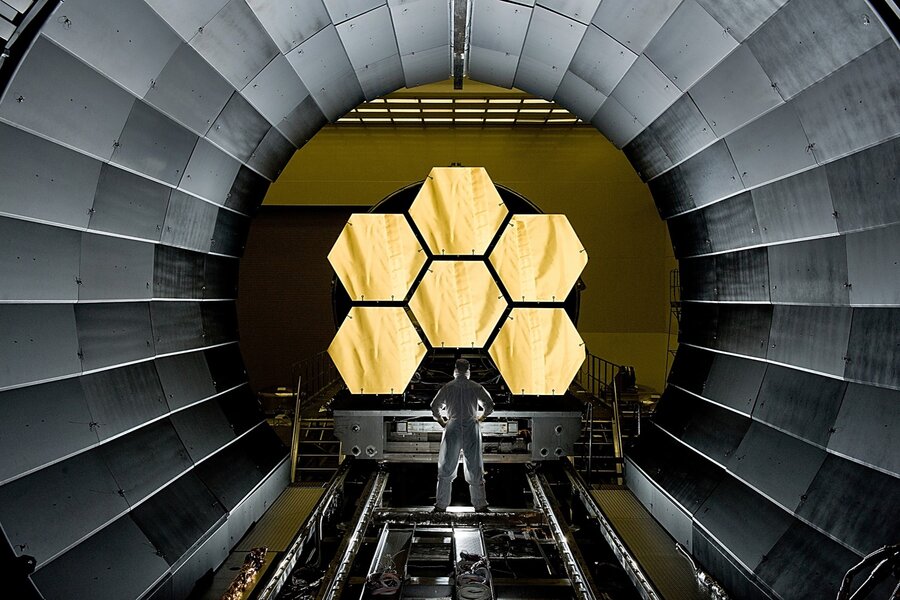Why NASA's Webb Telescope needs a massive mirror
Loading...
NASA technicians, clad in non-contamination suits and working in a "clean room," used a robotic arm to move a mirror the size of a coffee table into its place on the world's largest telescope on Wednesday.
The final addition to the James Webb Space Telescope (JWST) mirror marks the completed construction of a reflecting mirror that is nearly three times the diameter of Hubble's light-collecting surface, as the 18-piece mirror measures 21.3 feet versus Hubble's, at 7.9 feet, according to a NASA release.
The telescope is optimized to view objects in the infrared spectrum, meaning it can actually be used to search the origins of the universe, says Harvey Moseley, a NASA astrophysicist who developed a key part of the JWST's near-infrared spectrometer.
"Cosmology like this is one of the few things where you can actually do your history just by looking out into the universe," Dr. Moseley says.
Moseley and his team plan to use the infrared images collected by the JWSTTo better understand how the universe's chemical parts changed from a single, dense mass of heat into the myriad collection of stars and planets astronomers have observed for millennia. Because the universe is expanding at an ever-increasing rate, objects that are very far from Earth have "redshifted" as part of the Doppler Effect – their visible light has turned into infrared light. This means that the farthest objects, which appear closest to the universe's origin with the Big Bang, are invisible even with the Hubble telescope.
"We're seeing them, as it were, a very long time ago, and we can look almost back to the beginning of the universe," Moseley says.
The hexagon-shaped mirror of the telescope is optimized for the infrared light spectrum to view this "relatively unexplored part of the spectrum," Dominic Benford, an astrophysicist for NASA and scientist on the project, says in a phone interview.
This is one key difference between the new telescope and the Hubble telescope. The Hubble telescope views the universe almost exclusively in the visible light spectrum, but the JWST is designed to search out phenomena visible only in the infrared spectrum, Dr. Benford says. This means the heat-optimized gaze can look through the "shrouds of material" that, in the Milky Way in particular, absorb light from the visible spectrum and make telescope exploration difficult or impossible.
The JWST can peer past the dust clouds that often obscure a telescope's gaze in the Milky Way galaxy into the formation of planets, stars, and even galaxies, and, because the mirror itself is larger and admits more light, the images it returns will be sharper as well, Benford says.
The telescope will also be very cold – roughly 40 Kelvins above absolute zero, or minus 380 degrees Fahrenheit – because it is designed to see objects that are room temperature or colder, Moseley says. All objects glow when they are sufficiently hot, as anyone who has seen the red-hot burner of an electric stove knows, but the JWST will look in the infrared to see the "red-hot glow" of objects much cooler than stars, Benford says.
"The Hubble does the same kind of science but in the nearer part of the universe," Moseley says.
The JWST is a joint project of NASA, the European Space Agency, and the Canadian Space Agency, and is set for an October 2018 launch, according to NASA.
[Editor's Note: The original version of the story incorrectly attributed certain statements by Dr. Dominic Benford and incorrectly described the mirror of the JWST.]








